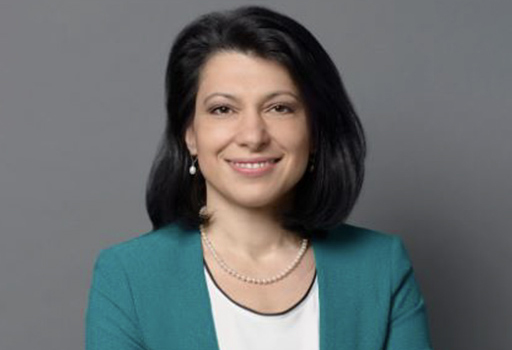When the world’s most-widely used financial messaging service announced that seven designated Russian entities (and their designated Russia-based subsidiaries) would be disconnected from the Swift network, it was careful to emphasise its lack of involvement in the decision.
The statement referred to “a global and politically neutral cooperative” that would “fully comply with applicable sanctions laws” based on diplomatic decisions taken by the EU in consultation with the UK, Canada and the US.
Russia has already attempted to reduce its dependence on Swift by creating its system for transfer of financial messages or SPFS. However, the system has struggled to gain traction among non-Russian banks and accounted for only about one fifth of all domestic financial messages as of the end of 2020, according to the Bank of Russia, which has set a target of raising that figure to 30% by the end of next year.
China has been aggressively promoting its cross-border interbank payment system (CIPS), but attempts to promote the yuan as an alternative global trade finance currency are underlined by capital controls that mean the yuan still only accounts for barely half sterling’s share of global payments by value.
Denominations
Perhaps the least-discussed option for reducing the influence of the dollar on global trade would be an extension of the EU’s Instrument for Supporting Trade Exchanges or Instex, which was established to support humanitarian trade with Iran.
In 2019, Russia’s foreign ministry stated that the full potential of Instex would only be realised if it was accessible to countries outside the European Union and suggested it could be extended to facilitate EU trade with Russia. But the EU has not officially indicated that it sees Instex as a potential future alternative to Swift, even if some of its member countries would doubtless like to see more trade done in euro.
In 2013, approximately 80% of Russia’s total exports were denominated in US dollars – now that figure is only just above 50%. There is an imbalance between Russia and China in this area though, with 60% of goods exported from China to Russia denominated in the dollar, compared with 23% of exports in the other direction.
Russia and China are not the only countries keen to reduce their dependence on the greenback and are far from the first to bemoan the dollar’s status as the world’s primary reserve currency.
In the 1960s, then French finance minister (and later president) Valéry Giscard d’Estaing referred to the dollar’s “exorbitant privilege” that allowed the US to effectively live beyond its means.
More recently the role of the US financial system in the global financial crisis made many question the wisdom of dollar’s hegemonic position.
In November, the Maldives Monetary Authority said it would implement currency substitution or de-dollarization this year, while the assistant governor of the National Bank of Cambodia has spoken of that country’s desire to reduce its dependence on the dollar.
Turkey is even more desperate to encourage greater use of its lira as it grapples with crippling inflation.
Dollar alternatives
A paper published by the Department of World Economy and International Business at Moscow-based Financial University last August outlined the scale of the challenge facing proponents of de-dollarization.
While acknowledging that the issue will gain more attention, the authors stated that any weakening of the position of the US dollar is unlikely because of its role in the trade of oil and petroleum products.
They also observed that the US – in the form of the Federal Reserve – would likely respond to efforts to reduce use of its currency by “searching for the weakest links for increasing the expansion of the dollar”.
Authoritarian powers will have registered the heavy sanctions imposed on Russia in response to its military campaign against Ukraine and the subsequent financial meltdown.
But while they might wish for an alternative to Swift, such an option is unlikely to materialise any time soon, according to Carla Norrlöf, associate professor at the University of Toronto and senior fellow at the Atlantic Council.
The US and its allies stand united in efforts to get Russia to stand down and China is unlikely to make its cross-border interbank payment system available to Russian corporations facing sanctions
Carla Norrlöf

“Alternatives would require scale to be effective,” she explains. “When the US and Europe diverged over sanctions on Iran, there was a real possibility to amass a quorum of users for an alternative platform. Today, the US and its allies stand united in efforts to get Russia to stand down, and China is unlikely to make its cross-border interbank payment system available to Russian corporations facing sanctions.”
According to the authors of the February 2022 report ‘Can Brics de-dollarize the global financial system?’ the US dollar’s dominant status should not be assumed to last for ever and technologies such as blockchain and digital currencies could propel the formation of a revisionist de-dollarization coalition.
They suggest such a coalition could lead to the creation of new market instruments and infrastructure that divert global financial traffic away from the incumbent system.
A November 2021 report from Juniper Research suggested the use of blockchain could reduce banks’ cross-border settlement costs by more than $10 billion a year by 2030. The report authors note that blockchain solutions such as RippleNet and Visa B2B Connect are already offering payment efficiencies over legacy systems.
James Rickards (author of ‘Currency wars: The making of the next global crisis’) envisages a scenario where North Korea sells weapons to Iran, Iran sells oil to China and China sells food to North Korea with all the transactions recorded on a blockchain and netted out on a quarterly basis with the net settlement payment made in gold shipped to the party with the net balance due.
Decentralized blockchain-based international payments systems have been described as a viable alternative to Swift for cross-border transactions, although Norrlöf believes their existence outside government purview is both an advantage and a disadvantage.
“Crypto platforms gain attractiveness when countries – or individuals and entities within countries – are hit by sanctions,” she says. “With the world’s largest crypto exchange (Binance) suspending trades by sanctioned Russians, there is uncertainty about the ability of such platforms to emerge as alternatives in the near term.”
Stellar is just one of the platforms promoting itself as an alternative to Swift. On the Stellar network, stablecoins denominated in different currencies can be moved and converted across its decentralized exchange with local regulated financial institutions or ‘anchors’ accepting and paying out traditional currency in their local geography.
Transactions finalise in approximately five seconds and cost fractions of a cent in network fees. However, Stellar only has anchors in 16 different countries.
Limited appetite
Dimitris Valatsas, chief economist at macroeconomic and geopolitical advisory firm Greenmantle, acknowledges that blockchain technology has advanced rapidly in recent years and that many proponents think the global payments system could run on it.
“It is possible that in the long run, a decentralized system proves technologically superior and comes to dominate transactions,” he says. “But I highly doubt this will limit governments’ ability to regulate international capital flows or impose financial sanctions.”
Chris Miller, co-director of The Fletcher School’s Russia and Eurasia programme at Tufts University, is also sceptical, suggesting there is limited appetite for a genuine alternative to Swift outside those banks that have been removed from the network.
A decentralized blockchain-based international payments system could be viable, but there is no chance of Russia rolling out an alternative while it is illegal for Americans and Europeans to transact with its biggest banks
Chris Miller, The Fletcher School

“A decentralized blockchain-based international payments system could be viable in the future, but only if it gets buy-in from the major economies,” he adds. “There is no chance of Russia successfully rolling out an alternative while it is illegal for Americans and Europeans to transact with its biggest banks.”
The dollar will not be replaced as the dominant global reserve currency for many decades.
The US is the most desirable market for all countries, and many of them run current account surpluses with the US that they use to purchase US government bonds – denominated in dollars – as the safest asset, especially for central bank foreign-exchange reserves.
That is the view of Michael Bernstam, research fellow at Stanford University’s Hoover Institution, who observes that Swift has benefited massively from the network effect and that replacing it would be a prohibitively expensive and lengthy process.
“Cryptocurrency has its own network that can be used parallel to Swift for international payments,” he says. “It is complementary, not a substitute.”
Cryptocurrency has its own network that can be used parallel to Swift for international payments. It is complementary, not a substitute
Michael Bernstam, Hoover Institution
The need to improve the global system of correspondent relationships is a longstanding discussion in finance. Using a blockchain-based network would be attractive because it offers the ability to transfer value in a way that bypasses the expense and friction of these networks.
But a peer-to-peer system would need to be carefully designed to include effective tools against miscreants, warns Alisa DiCaprio, chief economist at R3.
“Today we can see that centralized networks like Swift give us a mechanism to remove rogue actors,” she adds. “Regulated blockchain-based networks incorporate rather than disintermediate existing institutions in the financial system, which is critical to a resilient and efficient global payments infrastructure.”
DiCaprio is another who believes that conventional and blockchain-based networks are not mutually exclusive.
“The future of finance isn’t completely centralized or decentralized – it is hybrid,” she concludes.





